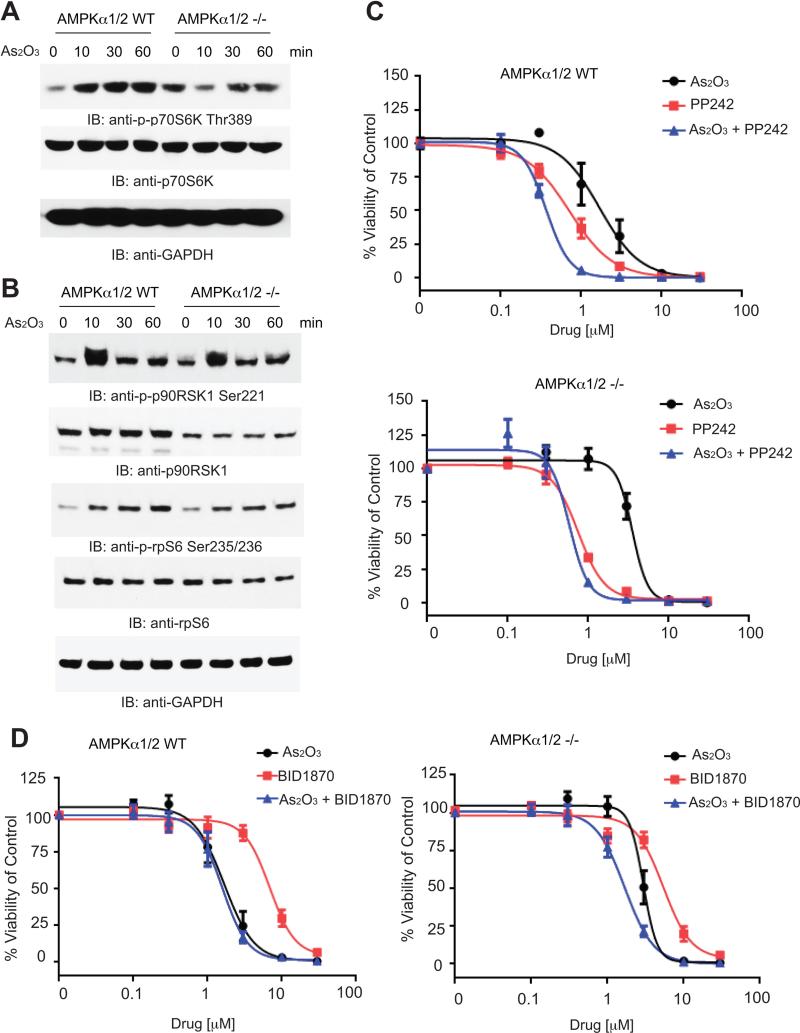Figure 3.
Loss of AMPK affects arsenic - dependent signals and induction of cytotoxicity. A, AMPK 1/2 WT and knockout MEFs were serum starved overnight and then treated with As2O3 (5 μM) for the indicated times. Total cell lysates were then resolved by SDS-PAGE and immunoblotted with the indicated antibodies. The immunoblots with antibodies against the phosphorylated forms of the proteins or against the total proteins were from lysates from the same experiments analyzed in parallel by SDS-PAGE. B, AMPK 1/2 WT and knockout MEFs were serum starved overnight and then treated with As2O3 (5 μM) for the indicated times. Total cell lysates were then resolved by SDS-PAGE and immunoblotted with the indicated antibodies. The immunoblots with antibodies against the phosphorylated forms of the proteins or against the total proteins were from lysates from the same experiments analyzed in parallel by SDS-PAGE. The blots shown are the same lysates shown in panel A but were run in a different gel. C, AMPKα 1/2 WT and knockout MEFs were plated in 96 well plates and treated with varying concentrations of As2O3, the mTOR inhibitor PP242 and As2O3+PP242 for 4 days. Viability was assessed using a WST-1 assay. Data are expressed as a percentage of vehicle control treated cells. Shown are means and standard errors of three independent experiments. D, AMPKα 1/2 WT and knockout MEFs were treated with varying concentrations of As2O3, or the RSK inhibitor BI-D1870 or the combination of As2O3+BI-D1870 for 4 days and viability was measured by a WST-1 assay. Data are expressed as a percentage of vehicle control treated cells. Shown are the means and standard errors of three independent experiments.

